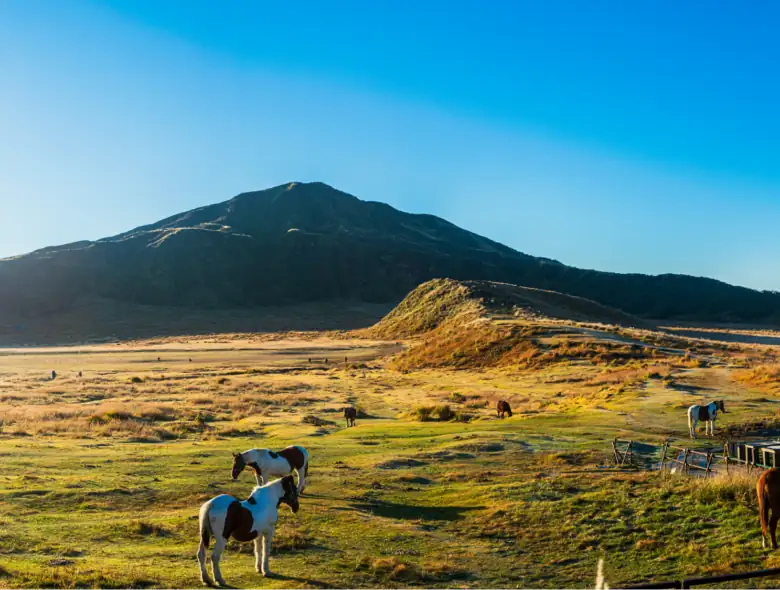The World Economic Forum revealed that Japan ranked 3rd among top world travel destinations in 2024, coming in behind the United States and Spain. According to the Japan National Tourism Organization (JNTO), as of March 2024, around 3 million international visitors traveled to Japan, an increase of 11.7% from the number of international visitors in 2019.
Some of Japan’s most popular tourist destinations include its capital, Tokyo; Osaka, known for its vibrant food scene; and Kyoto, the formal ancient capital city of Japan. However, venture out of these tourist hotspots and visitors will be rewarded with many a hidden tourist destination gem that they might not even know exists!
In this article, we’ll be taking a look at some of these lesser-known and off-the-beaten-path tourist spots in Kyushu, Japan’s southwestern most island, and the country’s third-largest island. Blessed with a mostly subtropical climate, those looking to reside somewhere away from the colder winters of the Kanto, Tohoku, and Hokkaido areas may want to consider Kyushu. Real estate organizations such as Village House, which has over 1,000 properties throughout Japan’s 47 prefectures can help with this.
1. Dazaifu
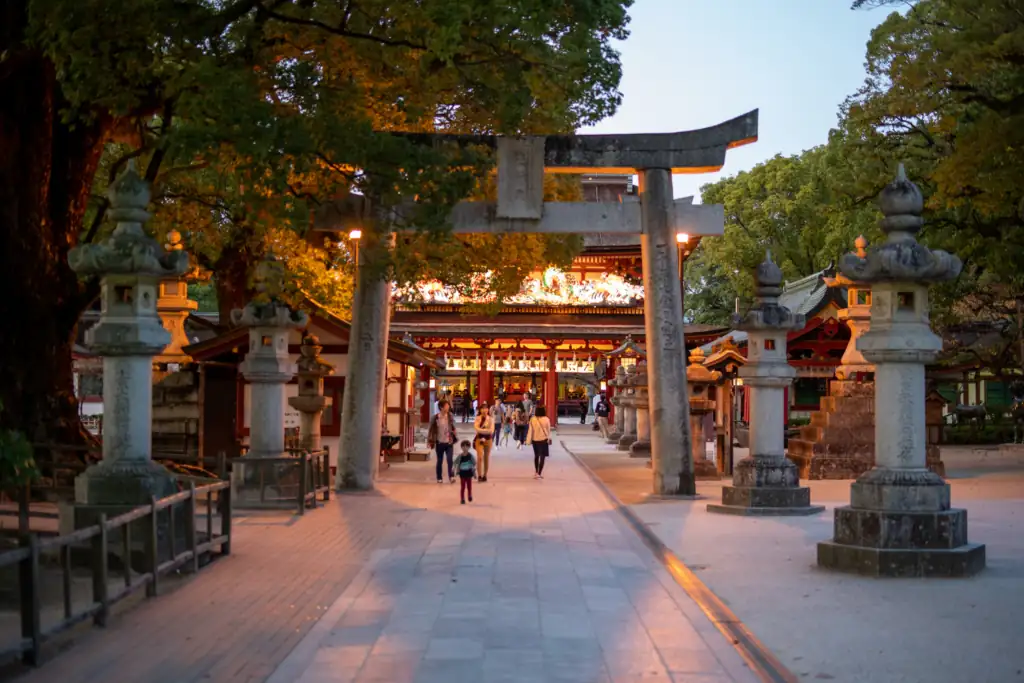
A city located on the island of Kyushu, Dazaifu is a popular day trip from Fukuoka and is famous for Tenmangu Shrine, which is surrounded by plum trees and frequently visited by students wishing and praying for academic success.
Established as a local government with jurisdiction over Kyushu during the 7th century, Dazaifu became the seat and central power of government in the area as well as a trading center with mainland Asia for hundreds of years.
The city is also seen as Kyushu’s most important Buddhist Center and visitors can learn more about this, its history as a seat of governmental power, and its historic ties to mainland Asia in Kyushu National Museum.
To get to Dazaifu, visitors can take a train from Fukuoka Tenjin Station on the Nishitetsu Daizaifu Line. Tickets cost around ¥400 one way and the journey takes around half an hour.
2. Mojiko
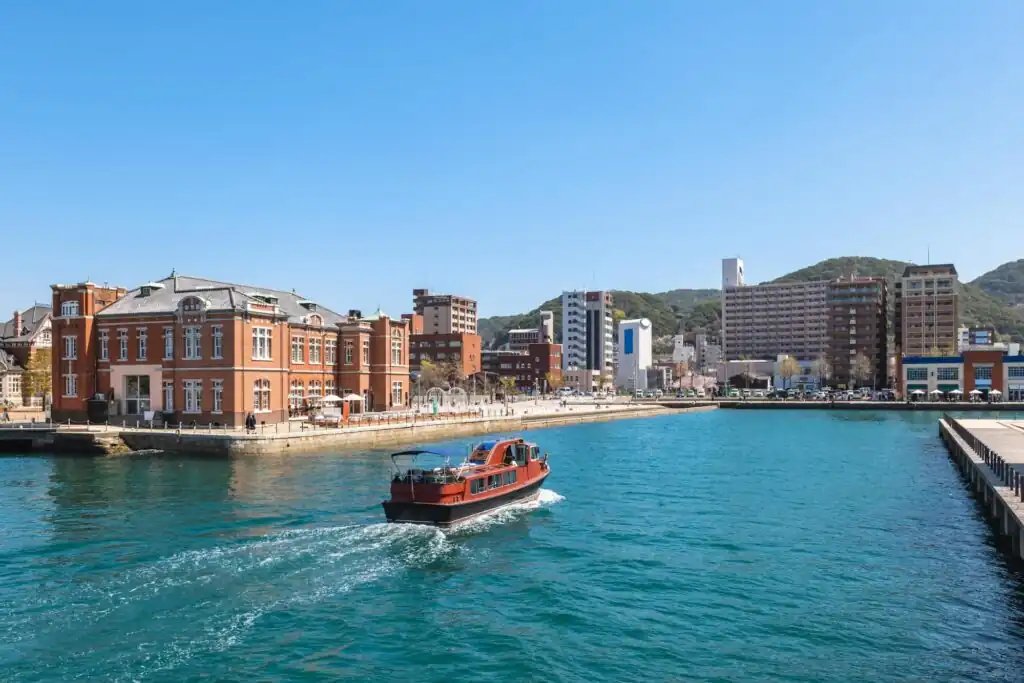
Mojiko or Moji Port was a former city of Moji and one of the 5 cities that merged to form what is now known as Kitakyushu City in 1963. Previously a prominent international trading port in the 19th century, it is now known for its well-preserved Western-style buildings from both Meiji and Taisho periods.
Mojiko is also home to Mojiko Station, one of Japan’s oldest train stations and arguably its most atmospheric. Visitors can also explore the former Moji Customs Building which offers a free art gallery.
Those wanting to learn more about the ward’s history can head on over to Kanmon Kaikyo Museum, a modern museum along the water which provides information about the history of the strait.
For those looking to do a little shopping or sample the local food, look no further than Kaikyo Plaza, a shopping facility with restaurants and cafes. A local delicacy to try is a baked curry and rice dish called Yaki Curry. Banana products are also famous here as the port traditionally handled imported bananas from Southeast Asia.
Getting to Mojiko requires visitors to hop on the JR Kagoshima Line, which costs ¥280 one way and takes around 13 minutes.
3. Mount Aso
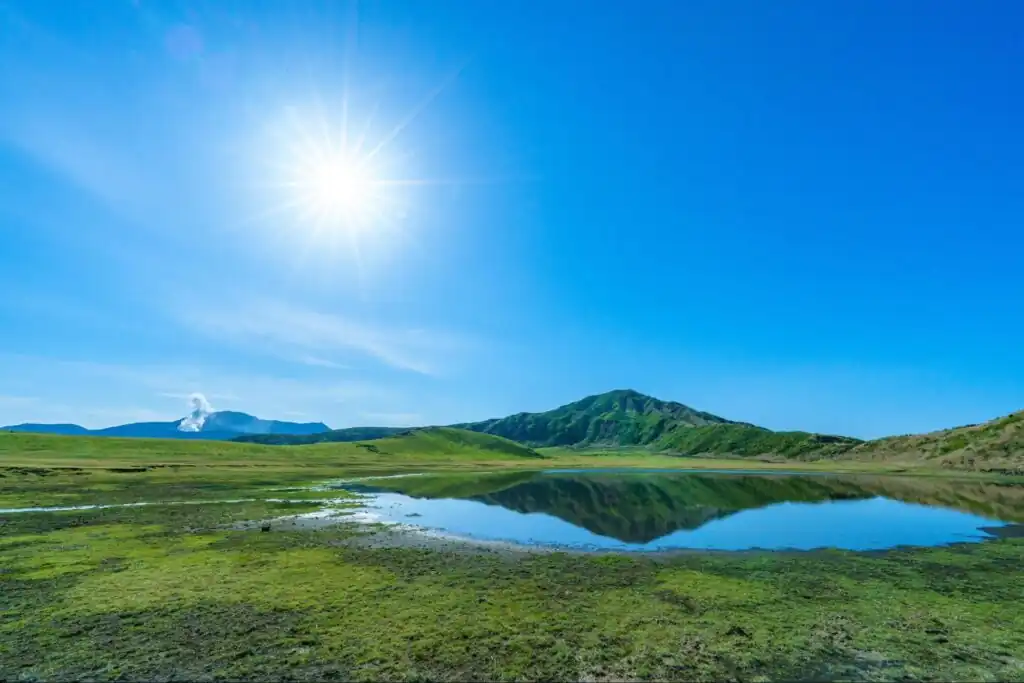
Known for being Japan’s largest active volcano and also one of the largest volcanoes in the world, Mount Aso resides in Aso Kuju National Park in Kyushu’s Kumamoto Prefecture.
The volcano sits in the middle of an ancient caldera with a diameter of around 25km and a circumference of over 100km, making it one of the largest calderas in the world. Visitors looking to explore this lesser-known tourist spot need to be aware that the crater is often partially or even completely closed off due to the risk of volcanic activity, turbulent weather, or poisonous volcanic gases.
That being said, there’s still plenty to do in the area. There’s the Aso Volcano Museum, which charges an admission fee of around ¥1,100. Visitors can also check out Kusasenri, also known as Kusasenri-ga-hama, which is a grassy plain occupied by cows and horses. Horse riding opportunities are available from early March to November, weather permitting.
Aso Shrine is also another attraction visitors can explore. With a history dating back over 2,000 years, it’s considered one of the oldest Shinto shrines in Japan, and one of the most prestigious in Kyushu.
To get to Mount Aso, visitors can take a 30 to 40-minute bus ride from JR Aso Station to Asosan Sancho Terminal. Tickets cost around ¥730 one way. From Asosan Sancho Terminal, visitors have the option of a 30-minute walk up to the crater or taking a shuttle bus, which costs around ¥600 one way.
4. Okawachiyama
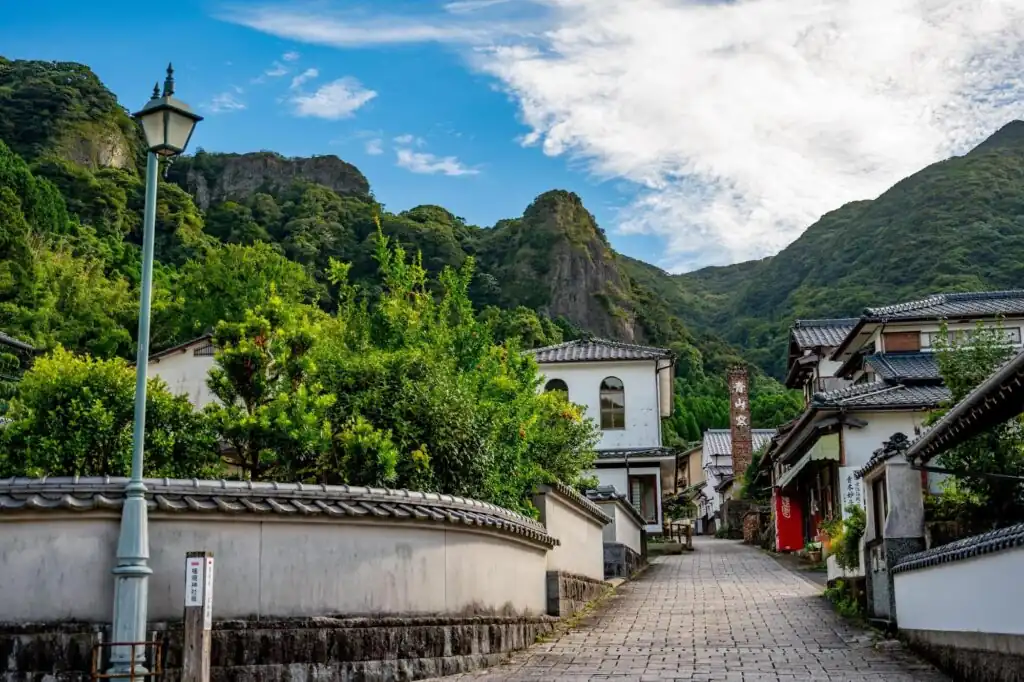
Okawachiyama is a small isolated village located in the mountains outside of central Imari, which is in the northwest of Kyushu in the Saga Prefecture. Famous for being the first place in Japan to produce porcelain, craftsmen trained and equipped with the necessary skills to work with and produce porcelain used to be brought in from Korea and settled into the village of Okawachiyama to continue their craft.
From 1675 to 1871, the village was the official kiln of the Nabeshima Family of the Saga Domain and they were tasked with producing high-quality pottery for the Imperial Court, shogunate, and various lords throughout Japan. Thus, with porcelain being a highly valued commodity and resource, the village was built to be well-defended and purposefully isolated to keep the technology of porcelain-making secret, earning Okawachiyama the moniker, “Village of Secret Kilns”. Pottery that came from here was known as Nabeshima-yaki and was considered some of the most exclusive porcelain in Japan.
In the present day, the village is mostly comprised of pottery workshops and storefronts known for their distinctive tall chimneys, a nod to the kilns built to produce porcelain. Visitors can not only purchase Nabeshima-yaki pottery but also attend workshops to try their hand at creating their pottery and painting their ceramics.
To get to Okawachiyama village, visitors have a few options:
- Take a bus from Imari Station. The 6km journey takes around 15 minutes and costs ¥200 one way. Bear in mind that there is a bus only every 2 hours.
- Take a taxi. From Imari Station, it costs around ¥1,800 one way and is about a 10-minute ride.
5. Yufuin
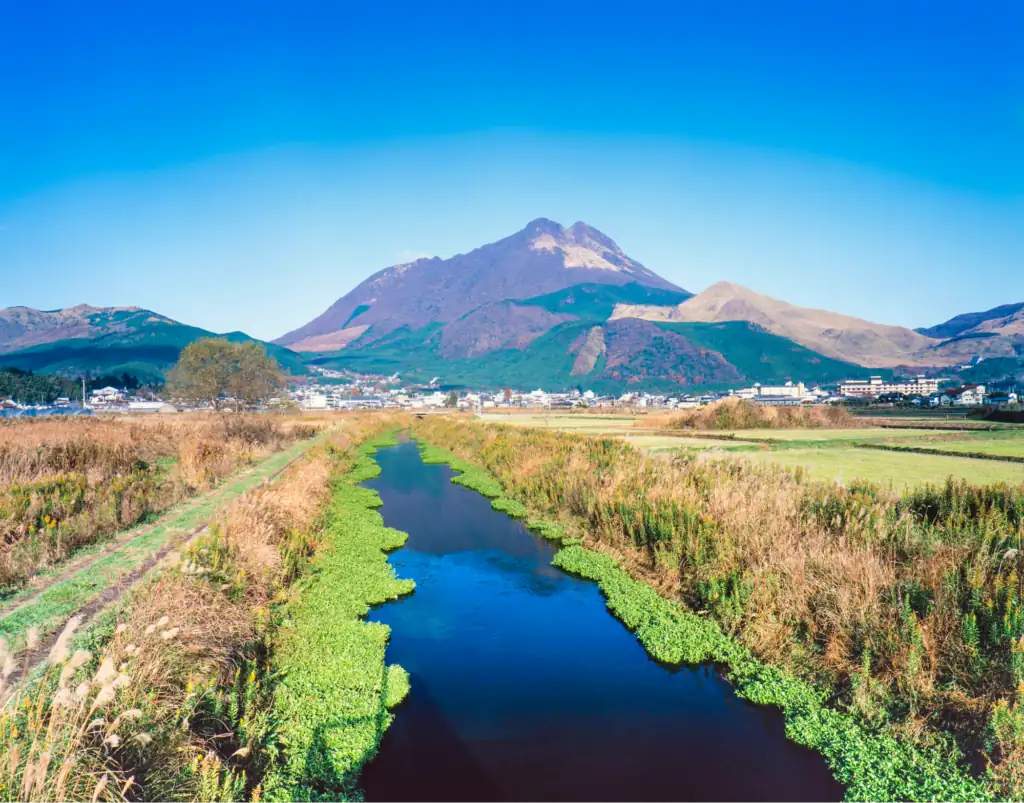
Yufuin was a town located in Oita, a coastal prefecture in Kyushu; and is now a district within the city of Yufu that sits about 400m above sea level. The town is famous for its onsens (hot springs) and lies at the foot of Mt. Yufu, which is popular with hikers and climbers.
Visitors looking to visit Yufuin can enjoy shopping on Yunotsubo Street, a road lined with restaurants, cafes, souvenir shops, food stalls, and craft shops that offer picturesque views of Mt. Yufu in the background.
For something a little quirkier, be sure to check out Yufuin Floral Village, which looks like a location set straight out of a Studio Ghibli film but is a mini theme park inspired by the villages of Cotswolds, England. Some attractions include animal cafes, and an owl forest zoo.
If the weather takes a turn for the worst or visitors just want to get out of the sun for a while, they can head on over to Yufuin Showa Museum or Yufuin Stained Glass Museum.
Visitors can then soak their tired calves and unwind from a day of exploring in Yufuin’s hot springs, which boast the third-highest flow of any onsen in Japan. Hot springs here are renowned for their health benefits, some of which include a reprieve from fatigue and arthritis.
Getting to Yufuin is possible from Beppu/Oita and Fukuoka:
- From Beppu in Oita Prefecture, take a train from Oita Station to Yufuin. The fare varies depending on whether you take a local or express train, but it starts from 950 yen one way. You can also take a bus from Beppu Station to Yufuin. It costs 1,100 yen and takes about 55 minutes.
- From Hakata, visitors have the option of taking the scenic “Yufuin-no-Mori” Limited Express Train (about 5,700 yen, about 2 hours 15 minutes) or a direct bus (3,250 yen, about 2 hours 25 minutes).
Related articles:
- 5 Popular Kyushu Beaches to Visit This Summer
- Neighborhoods in Kita-Kyushu
- Local Area Guide: Nagasaki
- Local Area Guide: Fukuoka
- Discovering Saga Prefecture: Unearthing Hidden Gems in Japan’s Countryside
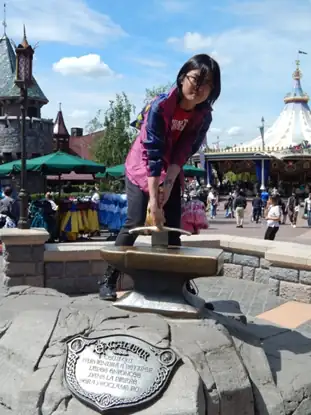
Freelance writer with over 2 years of experience writing for the Village House Blog, ESL teacher, and digital nomad who has lived in countries including The Czech Republic, The UK, The U.A.E., Japan, and most recently, Georgia. Is constantly on the hunt for the best, most optimal apartment for remote work when not enjoying going to film festivals, concerts, and the theater.


